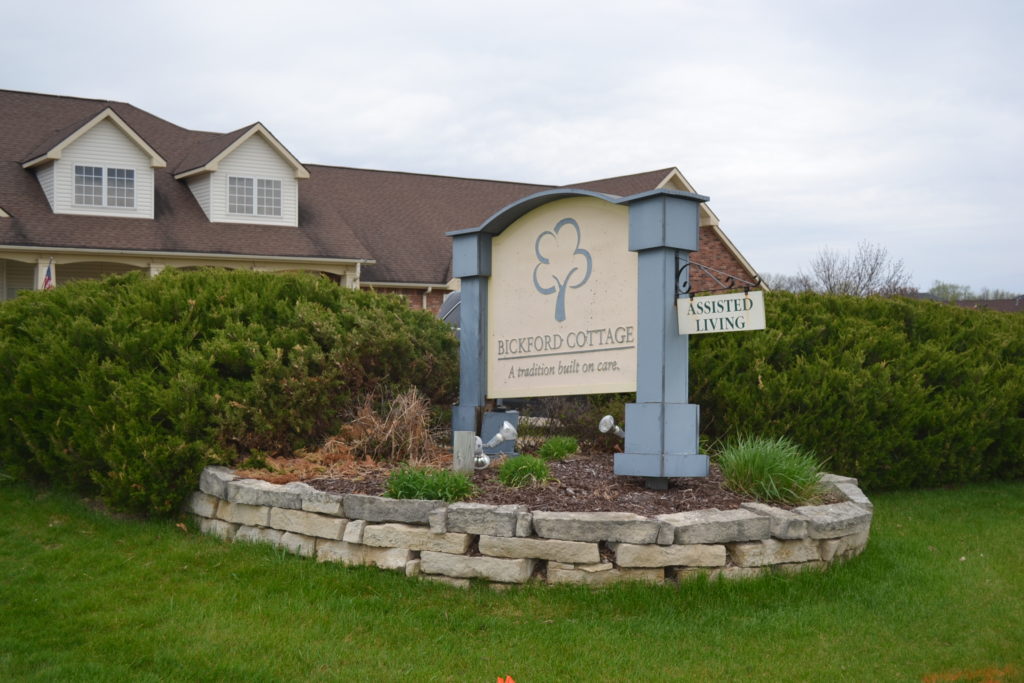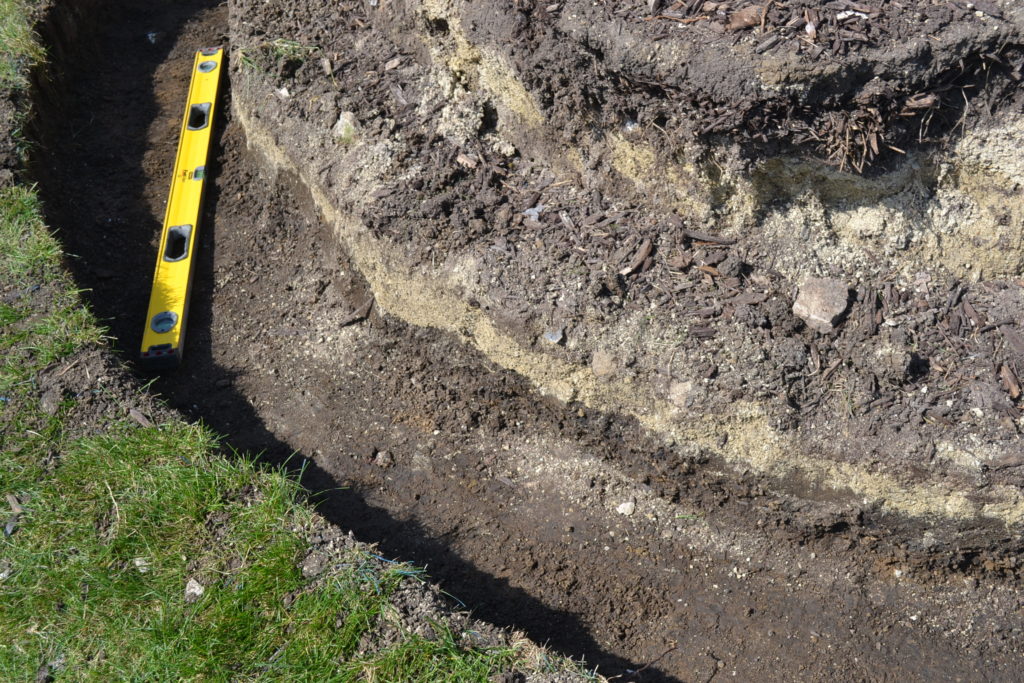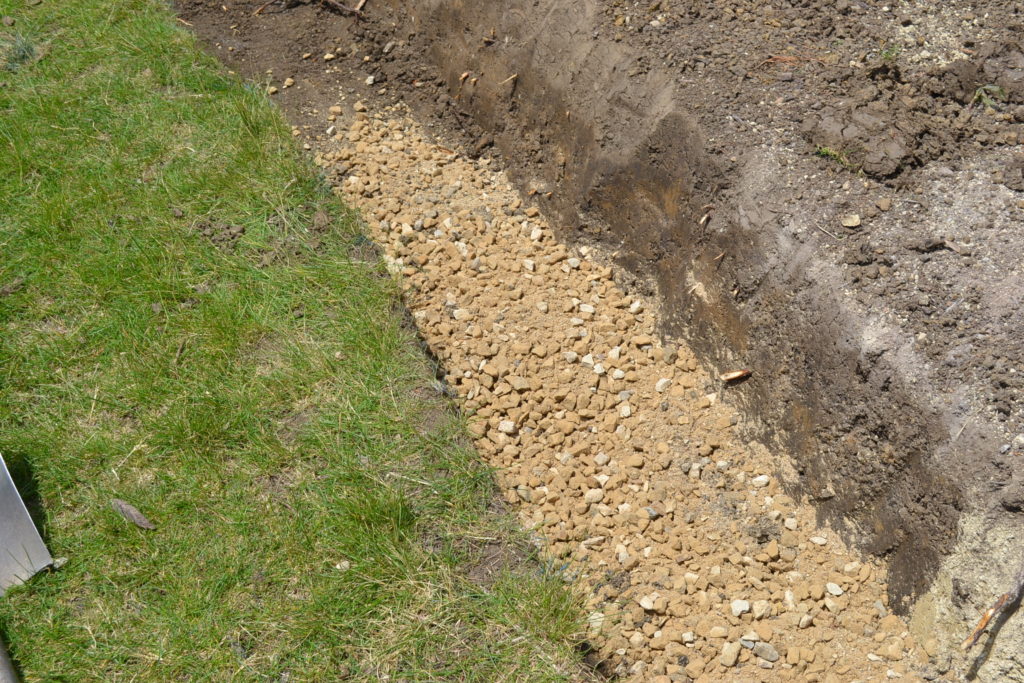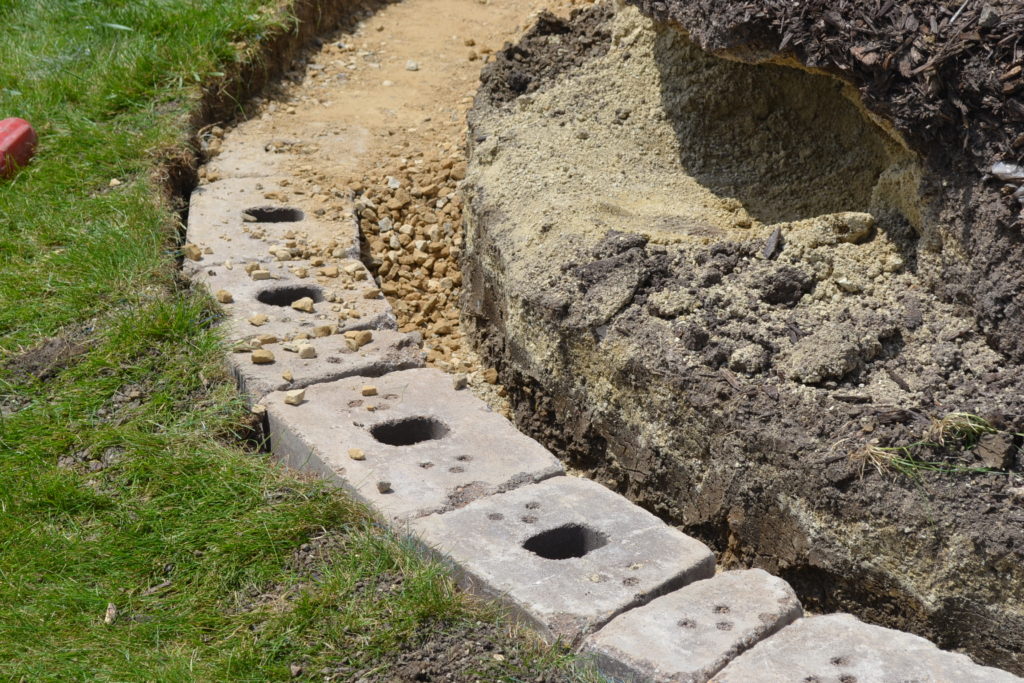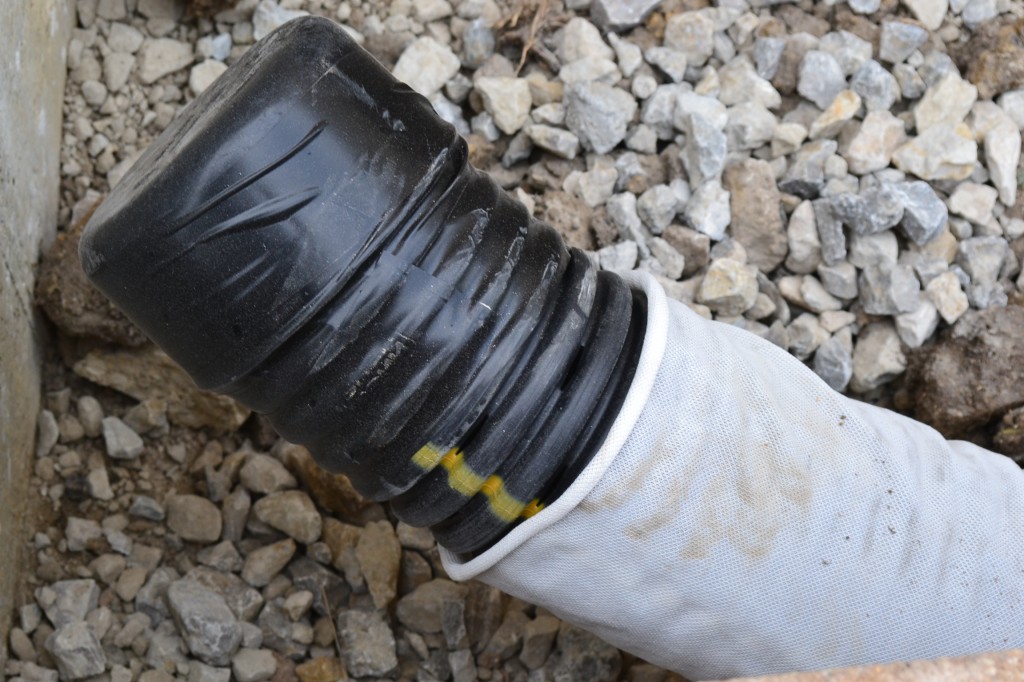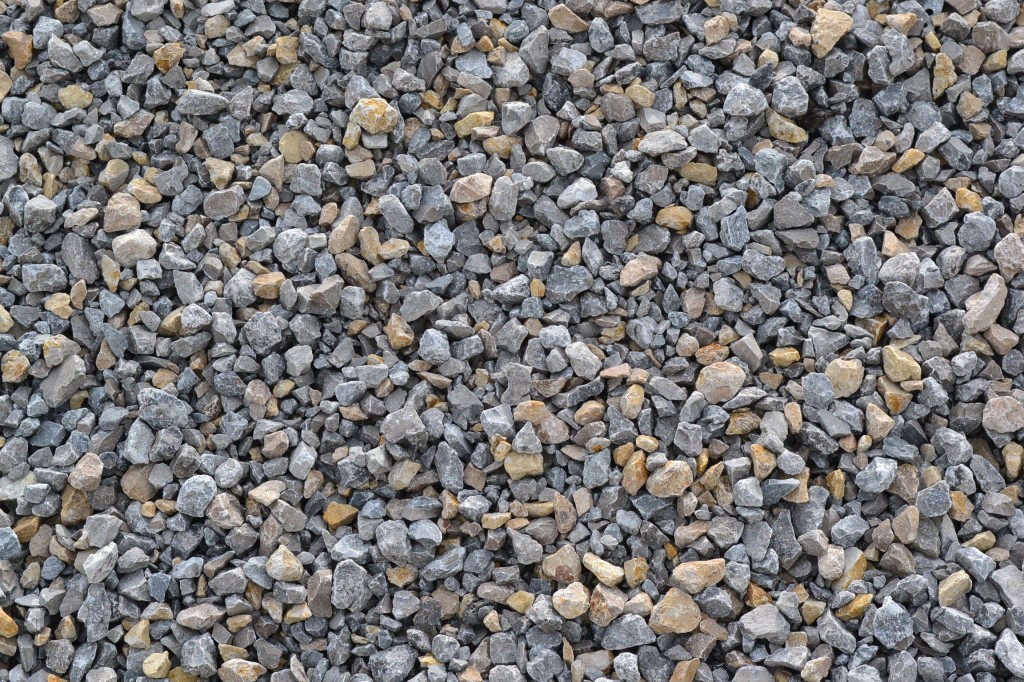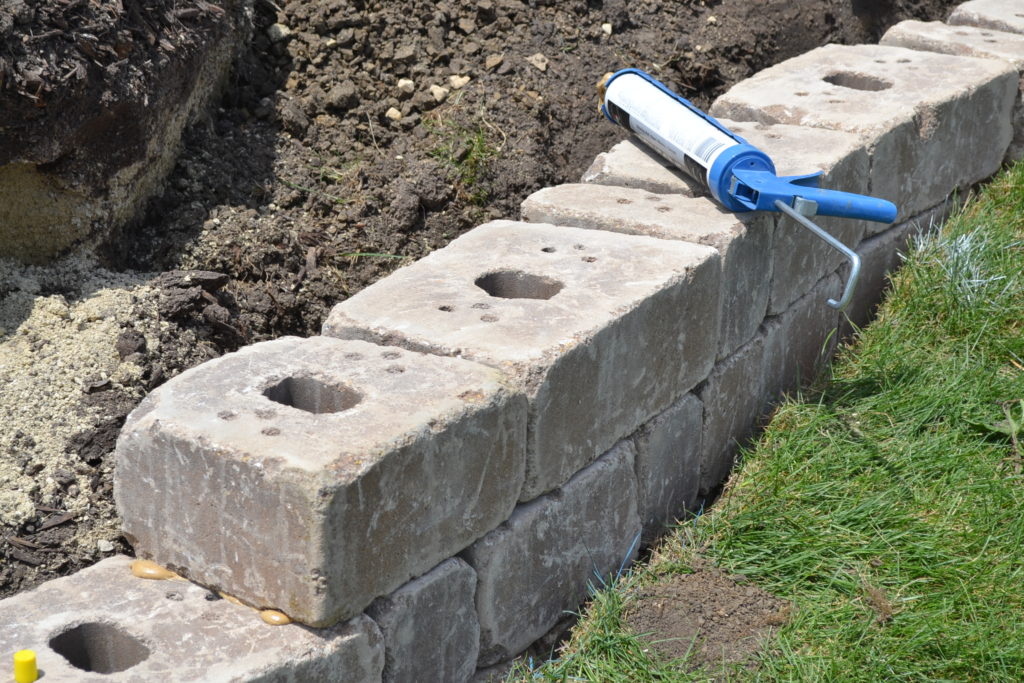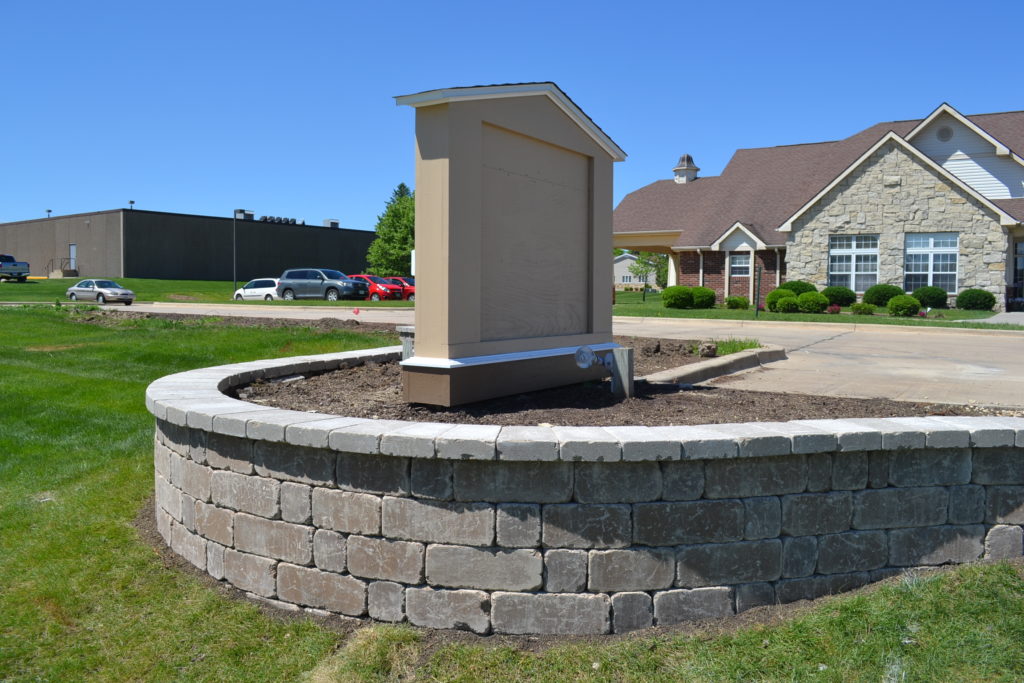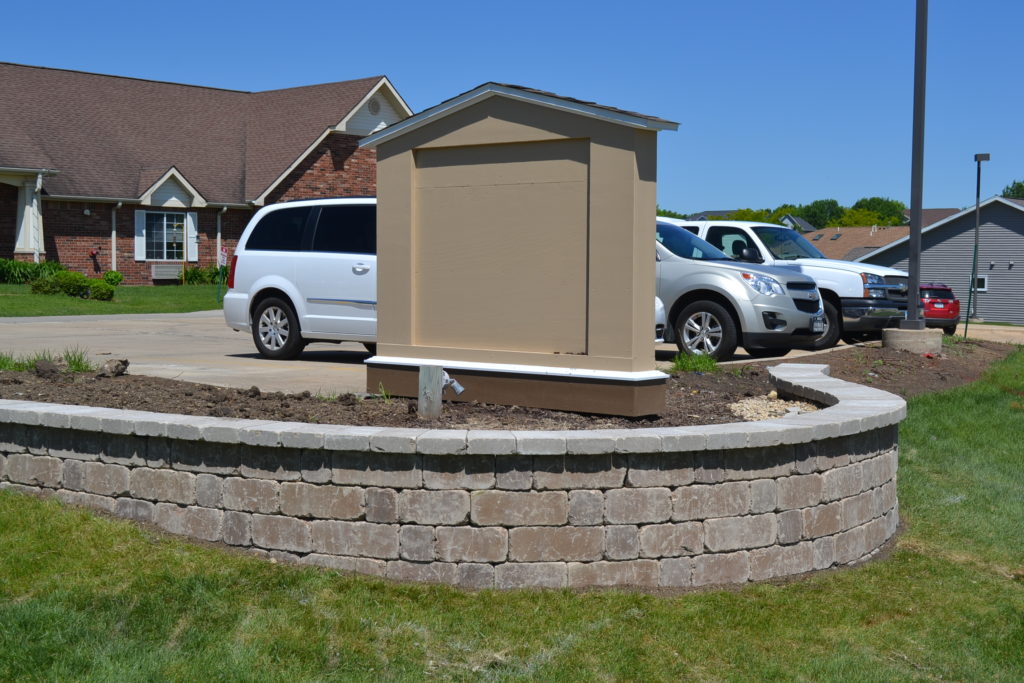How to properly install a Keystone Stonegate retaining wall.
Before
After
Excavate Your Site
Excavate the area where you are building your Keystone Stonegate retaining wall. You will need to bury your first-course of the block at the rate of 1″ to every course. Meaning if you wall is five courses high, you will need to bury five inches of the first block. You should install at least 1″ of 3/8 minus or 1″ minus base material for every course of retaining wall as well. You will need to excavate behind the retaining wall 2″ for every course high.
Install Base Material
Install the base material at the proper thickness for the height of your wall. Level out the base material and compact it to remove any air pockets. Compacting can be done with a hand tamper or vibrating packer plate. Depending on the height of your wall and the amount of base that you are using, hand tamping may not be a sufficient form of compaction.
Set Your First Course
As always, start at the lowest part of your project and set your base there first. The first course is the most important in any retaining wall because it determines how the following courses will sit. You need to make sure that your first course is level from side to side and front to back. If you are off a little, it will show the higher your wall gets. When setting a straight wall, it is essential to use a string line. A string line will help make sure that your wall is not wavy. Curved walls will have to be measured and eyeballed for the correct curvature.
Keystone Stonegate is a product that utilizes three different size blocks. Make sure that you are alternating stones and not using the same sized blocks next to each other. For the retaining wall system to work correctly, it must have staggered joints.
Install Drain Tile
It is essential to install perforated drain tile behind the back of your first course. The tile will reduce water pressure from behind the wall and help with run-off and drainage. Make sure that your tile has a drop to it so that the collected water drains out. Using a drain sock is vital because it keeps dirt from entering the tile and clogging it up. Make sure to install a cap on the ends of your tile to keep dirt out as well. The tile will need a drainage point so that the water can exit the tile. Make sure that the exit point is open and sticks out from the wall. If your exit point is hindered, water will not drain properly and cause your wall to fail.
Install 1″ Clean Rock
Install 1″ clean rock behind your wall to help with water drainage. After each course of the wall is stacked, install another layer of 1″ clean rock behind your wall. Compact each layer to ensure that all air pockets are out. Adding rock behind the retaining wall after each course will help stabilize the wall as it gets higher. You must use clean rock for this step. Clean rock allows water to pass through it down to the drain tile. If you use rock that has multiple consistencies such as base material, it will not let water pass through correctly. This can cause your wall to fail. Do not use river rock or smooth rock products as they will not pack properly. Smooth products will wash out and destabilize.
Set Your Second Course
Stack your second course on top of your first course. Off-set your blocks from the previous course to form a brick-like consistency. Keystone Stonegate blocks are installed with a pin system. Depending on the application (curves) it may be necessary to use a retaining block adhesive. Some of the pin holes will not line up, and the only way to secure the block is by gluing it together. Most Keystone Stonegate walls are decorative and are not load bearing; it is possible to secure the block using adhesive.
Set Your Third Course
Since Keystone Stonegate block has three different sized stones, the seems shouldn’t line up. Unlike other retaining wall systems where the seams must line up, Keystone Stonegate gets its unique look through seam irregularities. The third course should be stacked like the second course. Keep alternating your seems and making sure that there are different sized stone next to each other.
Installing a Cap on Your Kings Retaining Wall
Most retaining wall cap will need to be glued on to your top retaining wall block. You need to use landscape adhesive because it is designed to adhere one concrete surface to another. Other products will not work correctly. When installing a retaining wall cap on corners, it is necessary to cut each block to maintain the correct curvature.
Finished Project

